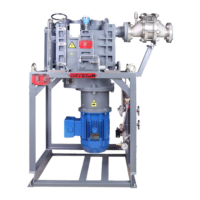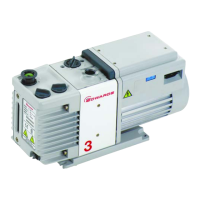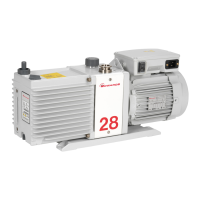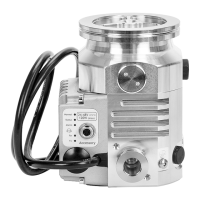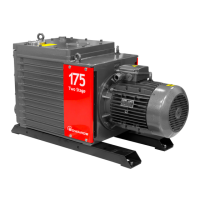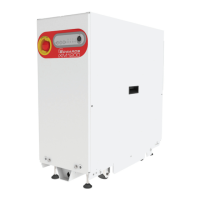© Edwards Limited 2009. All rights reserved. Page 29
Edwards and the Edwards logo are trademarks of Edwards Limited.
OPERATION
A705-74-880 Issue K
4OPERATION
The procedures in the following sections assume that you have a pump-inlet isolation-valve fitted to your pump.
4.1 Start the pump
Use the procedure below to start the pump.
1. Check the gearbox oil-level in the sight-glass on the side of the pump: refer to Section 3.4.
2. Check the high vacuum bearings oil-level in the sight-glass on the front of the pump: refer to Section 3.5.
3. Turn on your cooling-water supply; shaft-seals purge air or nitrogen supply, gas-ballast nitrogen supply (if fitted)
and exhaust-extraction system (if fitted).
4. Switch on the pump.
5. Continue at Section 4.2 to allow the pump to warm up.
4.2 Pump warm up
Allow the pump to warm up and use full gas-ballast and inlet purge (if fitted) before you pump condensable
vapours. If you do not, the vapours may condense in the pump and corrode or damage the pump.
In the first 30 seconds of pump down, open the inlet isolation-valve slowly. If there is liquid in the inlet pipeline,
a sudden ingress of liquid entrained in the process gas stream could damage the pump.
To allow the pump to warm up and to achieve its operating temperature, leave the pump to operate with the inlet
isolation-valve closed. A temperature of between 113 to 131°F (45 to 55°C) measured at the point adjacent to the
thermal snap- switch (see Figure 1). If a quick warm up time is desired, please contact Edwards for applications
advice.
When the pump has warmed up to its operating temperature, you can start process pumping.
During operation, some parts of the pump become hot; these areas are identified by 'hot surface'
labels (see Section 1.1). Do not touch these areas of the pump and avoid accidental contact
between these areas of the pump and electrical installations.
Do not operate the pump with a coupling cover removed.
Do not operate the pump with the pump-inlet or pump-outlet open to atmosphere.
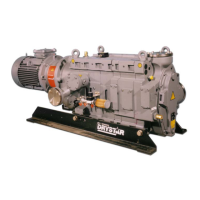
